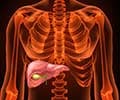Recurrent Cystitis in Young Women
Up to 20 percent of young women with acute cystitis develop recurrent UTIs. In this situation causative organism should be identified by urine culture to help differentiate between relapse (infection with the same organism) and recurrence (infection with different organisms).
Multiple infections caused by the same organism are, by definition, complicated UTIs and require longer courses of antibiotics and possibly further diagnostic tests.
Fortunately, most recurrent UTIs in young women are uncomplicated infections caused by different organisms. These infections are generally not associated with underlying anatomic abnormalities and do not require further work-up of the genitourinary tract.
Women who have more than three UTI recurrences documented by urine culture within one year and no identifiable anatomic defect can be managed using one of three preventive strategies:
Each of these regimens has been shown to decrease the morbidity of recurrent UTIs without a concomitant increase in antibiotic resistance. Long-term studies have shown antibiotic prophylaxis to be effective for up to five years with trimethoprim, trimethoprim-sulfamethoxazole or nitrofurantoin, without the emergence of drug resistance. Unfortunately, antibiotic prophylaxis does not appear to alter the natural history of recurrences because 40 to 60 percent of these women reestablish their pattern or frequency of infections within six months of stopping prophylaxis.
Up to 20 percent of young women with acute cystitis develop recurrent UTIs. In this situation causative organism should be identified by urine culture to help differentiate between relapse (infection with the same organism) and recurrence (infection with different organisms).
Multiple infections caused by the same organism are, by definition, complicated UTIs and require longer courses of antibiotics and possibly further diagnostic tests.
Fortunately, most recurrent UTIs in young women are uncomplicated infections caused by different organisms. These infections are generally not associated with underlying anatomic abnormalities and do not require further work-up of the genitourinary tract.
Women who have more than three UTI recurrences documented by urine culture within one year and no identifiable anatomic defect can be managed using one of three preventive strategies:
1. Acute self-treatment with a three-day course of standard therapy.
2. Postcoital prophylaxis with one-half of a trimethoprim-sulfamethoxazole double-strength tablet (40/200 mg) if the UTIs have been clearly related to intercourse.
3. Continuous daily prophylaxis with one of these regimens for a period of six months trimethoprim-sulfamethoxazole, one-half tablet per day (40/200 mg); nitrofuranto in, 50 to 100 mg per day; norfloxacin, 200 mg per day; cephalexin 250 mg per day; or trimethoprim, 100 mg per day.
Each of these regimens has been shown to decrease the morbidity of recurrent UTIs without a concomitant increase in antibiotic resistance. Long-term studies have shown antibiotic prophylaxis to be effective for up to five years with trimethoprim, trimethoprim-sulfamethoxazole or nitrofurantoin, without the emergence of drug resistance. Unfortunately, antibiotic prophylaxis does not appear to alter the natural history of recurrences because 40 to 60 percent of these women reestablish their pattern or frequency of infections within six months of stopping prophylaxis.
| Urine culture to identify causative organisms Differentiate relapse from recurrence. 3 episodes in 1 year documented by urine culture to be managed by one of three strategy: 1. Three-day standard therapy 2. Post coital prophylaxis TMP/SMX 3. Continuous daily prophylaxis. |





Comments
for urinary problem which doctor shall I contact Medicine or Urologist
I have UTI generally recurring. Last time I had around a years back and got treated with Ofloxacin for about 15 days. Today I am suffering for very frequent urination with sensation and unable to control. Kindly suggest some medicine.
First UTI in over 10 yrs. Unfortunately I've had over a month of UTI symptoms. The first two urine specimens were [ ] for blood, WBC, and bacteria but were NEVER cultured. I went through two different rounds of antibiotics. Symptoms still there. My doctors were saying obviously it isn't an UTI, that it must be stress or something else. We'll finally after suffering a month, the next urine sample WAS cultured and it came back I have coagulase negative staph. And get this, the bacteria is resistant to most antibiotics, including penicillin, Levaquin, Sulfa, and Cipro. I'm not so sure not culturing a positive urine sample is such a great idea. I know I have greatly suffered. I'm now on macrobid and hoping this will take care of it.
I have a recalled bladder sling and I have been having recurring UTI synptoms. Nitrites and leukocytes are always present, but cultures grow nothing. I am at a loss and so is my Dr. I am seeing a specialist at Vanderbilt and he is removing the sling in a couple of weeks. Anyone else have this issue?
i have found that UTIs with no symptoms should not be treated especially if they have ESBL or KPC.
A well known case ESBL to me I stoped treating her with antibiotics works now well for more than 8 months